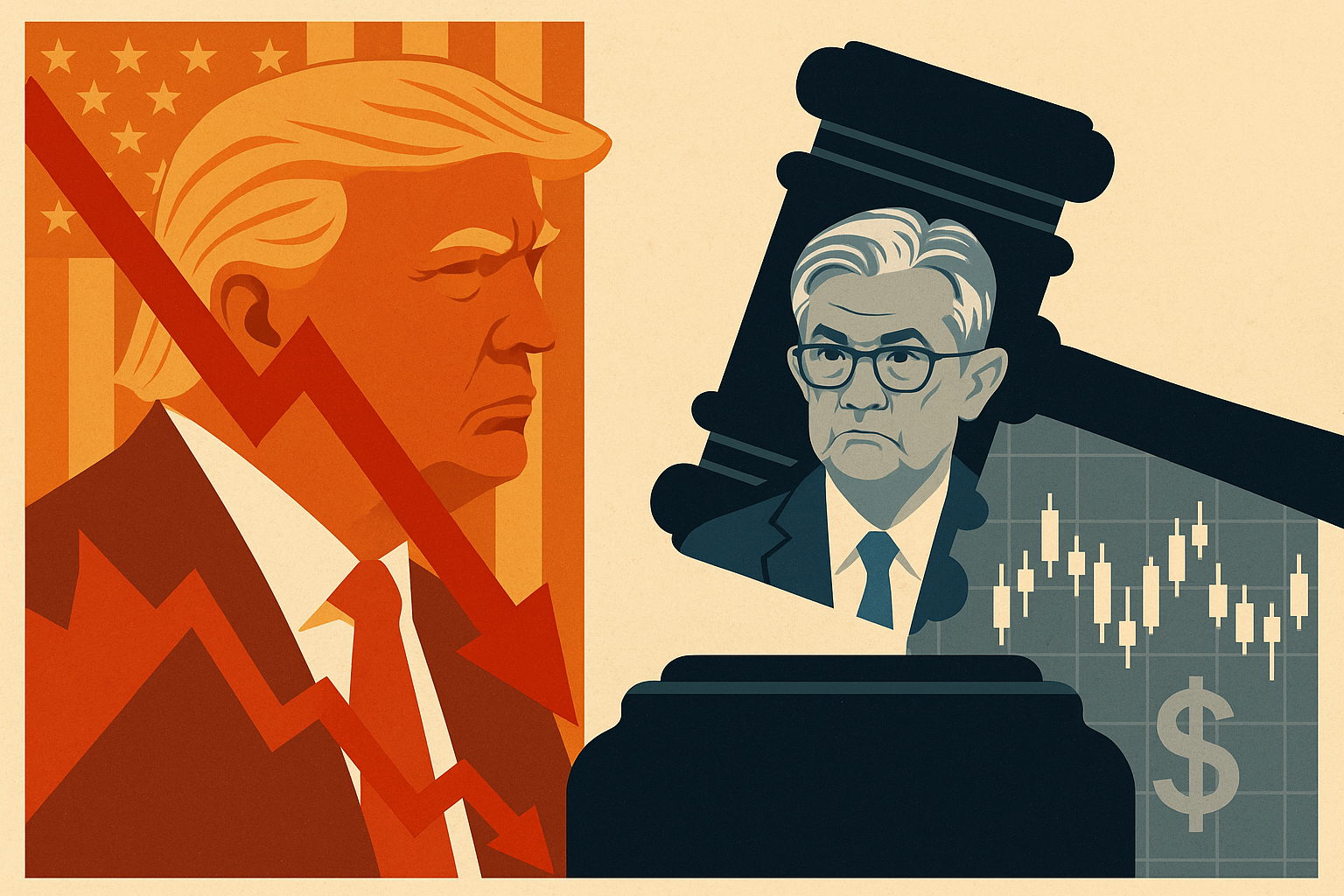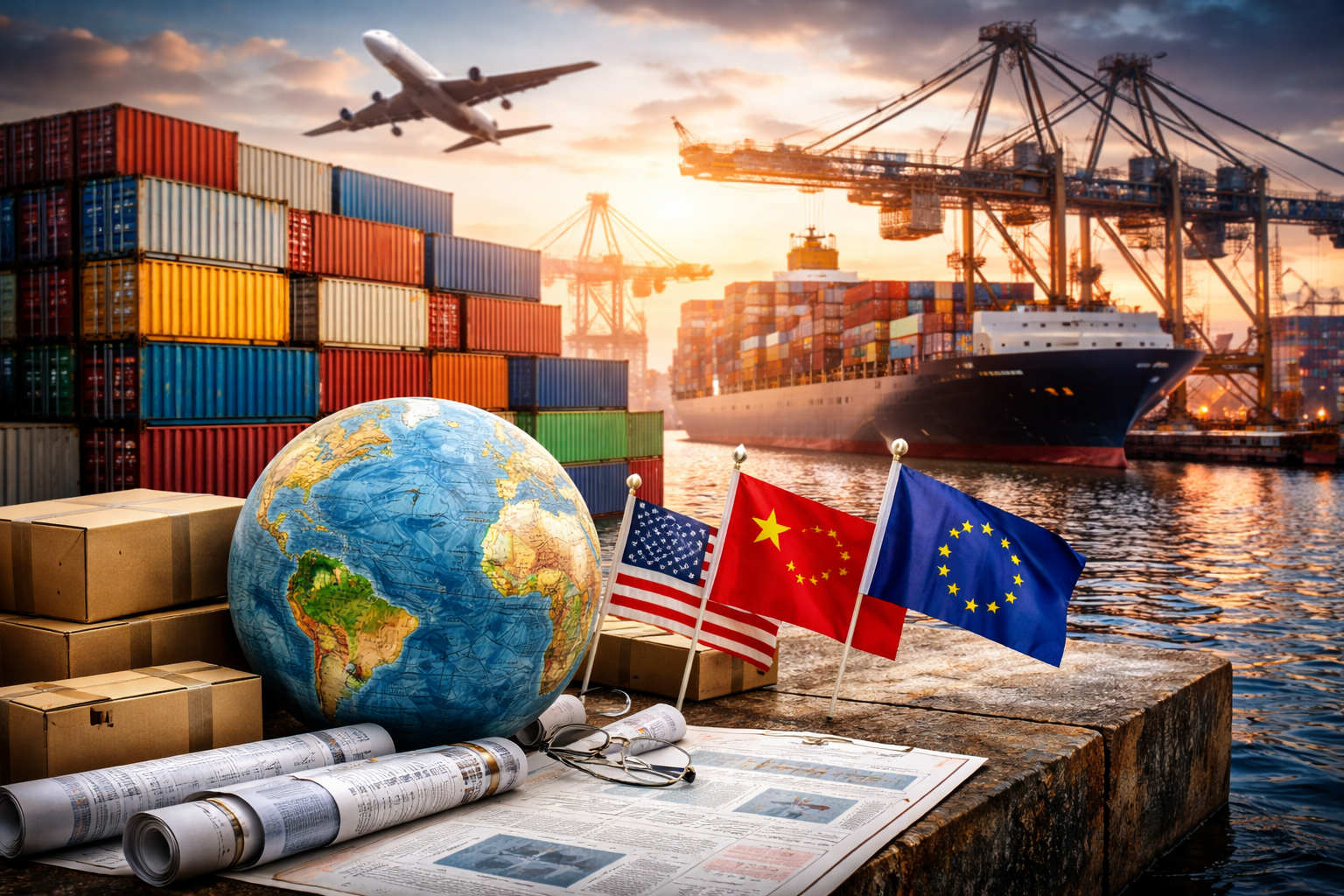Markets were jolted this week after President Donald Trump announced sweeping new tariffs on European Union imports—triggering fears of a renewed global trade war. Starting August 1, tariffs of up to 30% will be imposed on a range of EU goods, with Brussels expected to retaliate with €72 billion in countermeasures. The announcement briefly sent equities and the dollar swinging after unfounded rumors spread that Federal Reserve Chair Jerome Powell was on the verge of being fired.
Though Trump later denied any intention to dismiss Powell, the event underscored just how sensitive financial markets remain to political maneuvering and trade policy. For investors, the twin risks of protectionism and monetary policy instability are re-emerging as dominant forces heading into the second half of 2025.
Trade War Redux? Tariffs Return to the Global Stage
The new tariffs target a wide range of imports from the EU, including machinery, luxury vehicles, electronics, and agricultural products. According to Time and Reuters, administration officials claim the move is aimed at correcting “unfair trade imbalances” and protecting American industry. However, EU leaders quickly responded with threats of reciprocal duties on U.S. exports—raising concerns over escalating tit-for-tat retaliation.
This echoes the 2018–2019 tariff battles that weighed heavily on global GDP and corporate margins, especially for manufacturers, industrials, and global retailers. The announcement has already sparked a sharp selloff in shares of major U.S. exporters, including Boeing ($BA), Caterpillar ($CAT), and General Motors ($GM), all of which have substantial exposure to the EU.
Bond yields spiked temporarily, and the CBOE Volatility Index (VIX) surged over 12% intraday following the announcement, reflecting investor uncertainty.
Why This Matters for Investors
Tariffs act as an indirect tax on business and consumers—raising costs, squeezing margins, and dampening global trade flows. According to the Peterson Institute for International Economics, Trump’s previous tariffs led to an average 16% rise in input prices for affected sectors and contributed to lower business investment during his first term.
Inflation is still hovering above the Fed’s 2% target, and any new wave of trade friction could complicate the path to rate normalization. That’s why Powell’s position remains critical. While Trump quickly denied any plan to remove the Fed Chair, the rumor alone was enough to stir panic in Treasury markets—an indication of how fragile confidence in central bank independence remains.
For now, the Fed is expected to maintain its “watch and wait” stance, but the political spotlight on monetary policy could inject additional volatility ahead of the November elections.
Future Trends to Watch
1. Sector Impact and Repricing Risks:
Industrials, autos, and consumer goods with high EU exposure are most vulnerable. Companies like Tesla ($TSLA) and Ford ($F) may also face ripple effects due to supply chain disruptions.
2. Fed Independence and Market Volatility:
Investors should monitor future Fed statements closely. Any perceived political interference could weaken market confidence and increase rate volatility, especially in bonds and currency markets.
3. EU and Global Response:
The European Commission is expected to release details on retaliatory tariffs by early next week. A broad response could hit U.S. agriculture, aviation, and tech exports hardest. Watch for updates from Bloomberg, Reuters, and official EU trade briefings.
Key Investment Insight
The reemergence of aggressive trade policy adds a new layer of complexity for markets already navigating inflation, geopolitical conflict, and AI-driven valuation expansion. Investors should consider diversifying exposure away from tariff-sensitive sectors, reviewing supply chain vulnerabilities in portfolios, and hedging positions that are overly reliant on export revenues.
Additionally, risk-adjusted strategies—such as sector rotation toward domestic services or defensives—could help buffer portfolios in the event of a prolonged trade dispute.
For smart, daily analysis on markets, policy, and global investing, stay informed with MoneyNews.Today—your trusted source for investor-focused financial intelligence.





